IBM Delivers Robust Second Quarter Performance Boosted by Software and Infrastructure Growth
Highlights
- Revenue: $17 billion (+5% YoY at constant currency)
- Adjusted EBITDA: $4.7 billion (+16%)
- Free Cash Flow: $4.8 billion (highest first half margin in years)
- Software Revenue Growth: 8%
- Red Hat Growth: 14% (accelerated sequentially)
- Infrastructure Revenue Growth: 11%
- Hybrid Infrastructure Growth: 19%
- IBM Z Growth: 67%
- Automation Growth: 14%
IBM has reported a strong performance in the second quarter of 2025, exceeding expectations with significant contributions from its software and infrastructure segments.
Software and Infrastructure Drive Growth
Revenue for the quarter reached $17 billion, reflecting a more than 5% increase at constant currency. IBM's software division showcased robust growth, with Red Hat leading the charge at a 14% growth rate. The gross growth in software was marked by advancements in their hybrid cloud offerings and strategic acquisitions.
Infrastructure also played a crucial role, growing by 11%. A standout was IBM Z, with revenues surging 67%, underlining the growing demand for IBM's new z17 program. This suggests a powerful appeal in the integration of AI capabilities with traditional mainframe strengths.
Strong Financial Metrics
IBM’s adjusted EBITDA rose to $4.7 billion, representing a 16% increase, driven by revenue mix optimization and productivity improvements. The operating earnings per share grew by 15% to $2.80.
Free cash flow generation was particularly notable, at $4.8 billion—the highest for the first half in recent years—underscoring the strength and agility in IBM's financial operations, further supporting its investment in innovation and capacity management.
Strategic Position and Outlook
Despite a dynamic operating environment and selective spending constraints in segments like consulting, IBM's diversified portfolio exhibited resilience. The company maintained a strong liquidity position with $15.5 billion in cash and continued investment as indicated by $7.8 billion in acquisitions.
While consulting revenues remained flat, the focus has shifted towards high-impact technology investments, with an emphasis on AI and automation as strategic instruments for transforming client operations. With a healthy backlog and ongoing productivity initiatives, IBM is well-prepared to capitalize on emerging opportunities, driven by a disciplined strategy and a durable business model.
